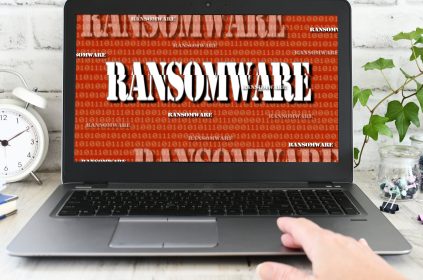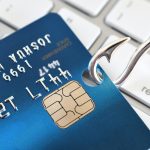Carla was the accounts payable manager at a mid-sized manufacturing company. She was diligent in her work and always made sure that the company’s suppliers were paid on time. One busy Monday morning, Carla received an email that appeared to be from one of their trusted suppliers, TechMaster Corp. The email stated that the supplier had recently changed their banking information and included an updated invoice for a shipment of electronic components that the company had ordered the previous month.
The email looked legitimate, with the company logo, familiar formatting, and the correct contact details. Carla didn’t think much of it, as it wasn’t unusual for suppliers to update their payment information. She made a note to update the banking details in their system and proceeded to approve the payment for the outstanding invoice.
A few weeks later, Carla received a call from TechMaster Corp’s accounts receivable department. They informed her that their payment for the shipment was overdue. Confused, Carla explained that she had already made the payment after receiving their email with the updated banking information. The representative from TechMaster Corp was adamant that they had not sent any such email and that their banking information had not changed.
Alarmed, Carla immediately investigated the situation and discovered that the email she received was, in fact, a well-crafted phishing scam. The scammers had created an email address that closely resembled TechMaster Corp’s actual email address, and they had used it to send a fraudulent invoice with their own banking information. Unfortunately, the company had already paid the scammers a significant sum of money, thinking they were paying their legitimate supplier.
Carla reported the incident to her supervisor and the company’s IT department. They quickly took action to prevent further scams by implementing stricter email security protocols and providing employees with training on how to spot and avoid phishing attempts. Additionally, the company introduced a policy requiring verbal confirmation with suppliers before making any changes to their payment information.
While the company was able to recover some of the lost funds through their insurance, the incident served as a costly lesson in the importance of vigilance and strong security measures to protect against invoice scams and other forms of cybercrime.
What is an Invoice Scam?
An invoice scam, also known as a fake invoice scam or billing fraud, is a type of financial fraud where criminals create and send counterfeit invoices to individuals or businesses, with the intent of deceiving them into making payments for goods or services that were never delivered or rendered. These scams can take various forms and often involve sophisticated tactics to make the fraudulent invoices appear legitimate and convincing.
In an invoice scam, the fraudsters typically gather information about a target company, its employees, suppliers, or customers through various means, such as social engineering, data breaches, or online research. Armed with this information, they create fake invoices that closely resemble the target company’s actual invoices or the invoices of their suppliers. The counterfeit invoices may include logos, formatting, and contact details that are consistent with genuine documents, making them difficult to distinguish from the real thing.
Here’s some examples of various invoice scams you can come across:
Supplier impersonation:
In this type of scam, fraudsters research and target a specific company, gathering information about its legitimate suppliers or vendors. Armed with this knowledge, they craft and send a fake invoice to the target company, making it appear as though it came from one of their trusted suppliers. The scammers may claim that the supplier has recently changed their banking information and request that the company update their records accordingly. They then urge the company to make the payment to the new account, which is controlled by the scammers. The convincing impersonation and seemingly legitimate request can make it challenging for the target company to recognize the scam.
Overdue payment scam:
In this scenario, fraudsters send a fake invoice to the target company, asserting that the company has an overdue payment for a product or service they never ordered or received. The invoice may include late fees or penalties to create a sense of urgency and pressure the company into making the payment. The company may feel compelled to pay the amount out of fear of damaging their credit reputation or facing legal consequences. These scams often exploit the target company’s lack of robust internal controls or communication systems to verify the authenticity of the invoice.
Directory listing scam:
This type of scam involves criminals sending an invoice to the target company for a business directory listing or advertisement service that the company never requested or agreed to. The invoice may appear to come from a well-known or reputable business directory, adding an air of legitimacy and making it more convincing. The target company may be deceived into paying for a service they never intended to use, and the scammers benefit from the payment.
Office supply scam:
In this scheme, scammers send fraudulent invoices to the target company for office supplies, such as printer cartridges, paper, or cleaning supplies, that the company never ordered. The invoice may include exaggerated prices or quantities to maximize the scammers’ profits. Often, the scammers rely on the target company’s lack of rigorous inventory control or approval processes to deceive them into paying for products they did not receive or need.
Each of these invoice scams exploits different vulnerabilities in the target company’s processes and relies on the company’s inability to recognize the scam or verify the legitimacy of the invoices. To protect against these scams, it is essential for companies to implement strong internal controls, train employees to identify suspicious invoices, and establish clear communication channels with suppliers and customers.
How Do You Protect Yourself from Invoice Scams?
Protecting yourself from invoice scams requires a combination of vigilance, education, and strong internal processes. There are many ways you can minimize the risk of falling victim to invoice scams. Let’s talk about them now.
Verify the sender and invoice details: When receiving an invoice, take the time to carefully examine the sender’s information and the details of the invoice itself. Look for any discrepancies in the email address, contact information, or banking details by cross-referencing your existing records. Pay attention to signs of suspicious activity or inconsistencies, such as changes in account numbers, formatting differences, or unusual requests. If you encounter any red flags, reach out to the supplier or vendor directly through verified contact information to confirm the authenticity of the invoice before making any payments.
Establish strong internal controls: Develop and enforce stringent internal controls within your organization to secure the invoice processing and payment procedures. Implementing multiple layers of approval, segregation of duties, and regular audits can provide a safeguard against fraudulent invoices. These controls help ensure that every invoice undergoes thorough scrutiny, reducing the chances of scams going unnoticed.
Train employees: Organize ongoing training programs for employees on how to recognize, report, and respond to suspicious emails, invoices, and potential scams. Providing regular updates on the latest fraud tactics empowers employees to stay vigilant, thus minimizing the likelihood of falling victim to fraudulent schemes. Include real-life examples and conduct mock exercises to enhance their understanding and build their confidence in identifying scams.
Maintain clear communication with suppliers: Cultivate transparent and secure communication channels with your suppliers and customers. Develop a policy that requires confirmation of any changes in payment information or other critical details through a trusted method, such as a phone call to a known contact or a face-to-face meeting. This proactive approach helps to prevent miscommunication and reduces the risk of invoice scams.
Regularly monitor financial accounts: Diligently review your bank and credit card statements for unauthorized transactions or suspicious activity. Establish a routine for checking your accounts and make it a priority to report any inconsistencies immediately to your financial institution. Swift action can help minimize the damage caused by fraudulent transactions.
Use secure email and IT systems: Invest in robust email and IT systems designed to protect against phishing, malware, and other cyber threats. Regularly update your computer, smartphone, and other devices with the latest security patches and antivirus software to safeguard your digital environment. This proactive approach can help prevent cybercriminals from gaining access to your sensitive information.
Develop a reporting procedure: Design a well-defined procedure for employees to report suspicious invoices or potential scams within the organization. Assign a designated person or team to be responsible for investigating and addressing such reports. This streamlined process encourages employees to promptly report any concerns, enabling your organization to take timely action against potential fraud.
Stay informed: Continuously educate yourself and your organization on the latest scams, data breaches, and identity theft trends. By staying informed, you can take proactive measures to protect your organization from emerging threats. Subscribe to industry newsletters, participate in relevant forums, and follow cybersecurity experts on social media to stay up-to-date on the latest developments in the field.


















